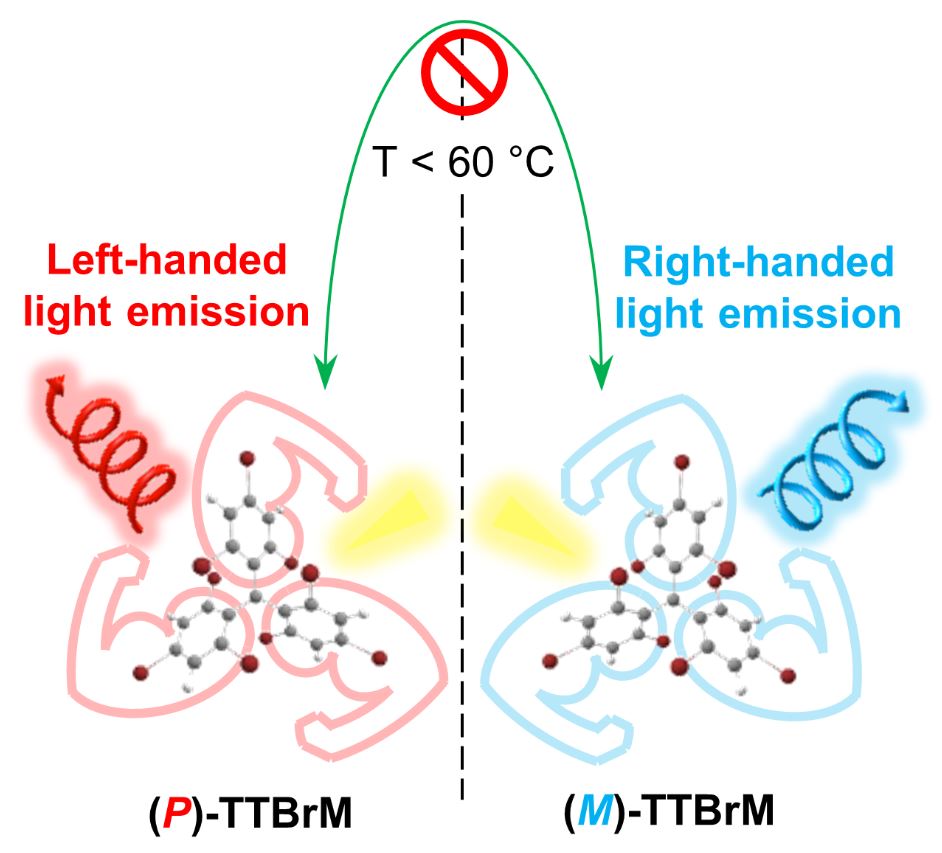
Researchers of NANBIOSIS U6. Biomaterial Processing and Nanostructuring Unit have just published the article titled “An enantiopure propeller ‐ like trityl ‐ brominated radical: Bringing together a high racemization barrier and an efficient circularly polarized luminescent magnetic emitter” in the scientific magazine Chemistry A European Journal.
The urgent need to cope with the more and more specific requirements in electronic devices is nowadays behind the search for new multifunctional materials. In this work, a step forward has been done in the field of organic free radicals acting as chiral emitters. The recently developed brominated trityl derivative, namely TTBrM radical, shows a satisfactory luminescent dissymmetry factor (|glum(592 nm)| ≈ 0.7 x 10-3) despite its pure organic nature. However, in contrast to its chlorinated homologues, no hints of racemization were observed up to 60 ° C for more than two hours, due to the higher steric hindrance imposed by the bulky Br atoms. Moreover, improved derivatives can be envisaged from this compound thanks to the wide possibilities that Br atoms at para-positions offer for further functionalization.
To see the article:
Jaume Veciana, Paula Mayorga-Burrezo, Vicente G. Jiménez, Davide Blasi, Teodor Parella, Imma Ratera, Araceli G. Campaña. An enantiopure propeller‐like trityl‐brominated radical: Bringing together a high racemization barrier and an efficient circularly polarized luminescent magnetic emitter. Chem. Eur. J. 10.1002/chem.202000098. 9 January 2020








